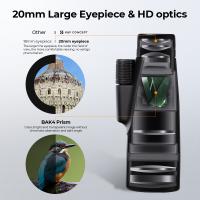What's Microscopic Colitis ?
Microscopic colitis is a type of inflammatory bowel disease that primarily affects the colon. It is characterized by chronic inflammation of the colon, leading to symptoms such as chronic watery diarrhea, abdominal pain, and cramping. The inflammation in microscopic colitis is not visible during colonoscopy or other imaging tests, hence the name "microscopic." There are two main subtypes of microscopic colitis: collagenous colitis and lymphocytic colitis. Collagenous colitis is characterized by a thickening of the collagen layer in the colon, while lymphocytic colitis is characterized by an increased number of lymphocytes in the colon lining. The exact cause of microscopic colitis is unknown, but it is believed to involve a combination of genetic, environmental, and immune system factors. Treatment options for microscopic colitis include medications to reduce inflammation and control symptoms, as well as dietary and lifestyle modifications.
1、 Definition and classification of microscopic colitis
Microscopic colitis is a type of inflammatory bowel disease (IBD) that primarily affects the colon. It is characterized by chronic inflammation of the colon, leading to symptoms such as chronic watery diarrhea, abdominal pain, and weight loss. However, unlike other forms of IBD such as Crohn's disease or ulcerative colitis, the inflammation in microscopic colitis is not visible during colonoscopy or other imaging tests. Instead, it can only be detected through microscopic examination of tissue samples taken from the colon.
There are two main subtypes of microscopic colitis: collagenous colitis and lymphocytic colitis. In collagenous colitis, a thick band of collagen forms beneath the lining of the colon, while in lymphocytic colitis, there is an increased number of lymphocytes (a type of white blood cell) in the colon tissue. Both subtypes share similar symptoms and treatment approaches.
The exact cause of microscopic colitis is unknown, but it is believed to involve a combination of genetic, environmental, and immune system factors. Certain medications, such as nonsteroidal anti-inflammatory drugs (NSAIDs), proton pump inhibitors (PPIs), and selective serotonin reuptake inhibitors (SSRIs), have also been associated with an increased risk of developing microscopic colitis.
Treatment for microscopic colitis typically involves medications to reduce inflammation and control symptoms. This may include anti-inflammatory drugs like budesonide, as well as medications to manage diarrhea, such as loperamide. In some cases, dietary changes, such as avoiding trigger foods or following a low-fat, low-fiber diet, may also be recommended.
In recent years, there has been an increased recognition of microscopic colitis as a common cause of chronic diarrhea, particularly in older adults. Research has also highlighted the potential role of the gut microbiome and alterations in the intestinal barrier function in the development of microscopic colitis. Further studies are ongoing to better understand the underlying mechanisms and to develop more targeted treatment options for this condition.
2、 Clinical presentation and symptoms of microscopic colitis
Microscopic colitis is a type of inflammatory bowel disease (IBD) that primarily affects the colon. It is characterized by chronic inflammation of the colon lining, which can only be seen under a microscope. There are two main subtypes of microscopic colitis: collagenous colitis and lymphocytic colitis.
Collagenous colitis is characterized by the presence of a thickened layer of collagen in the colon lining, while lymphocytic colitis is characterized by an increased number of lymphocytes in the colon lining. Both subtypes share similar clinical presentations and symptoms.
The most common symptom of microscopic colitis is chronic, watery diarrhea. Other symptoms may include abdominal pain, cramping, urgency to have a bowel movement, and fecal incontinence. Some individuals may also experience weight loss, fatigue, and dehydration due to the persistent diarrhea.
The exact cause of microscopic colitis is unknown, but it is believed to involve an abnormal immune response in the colon. Certain risk factors have been identified, including female gender, older age, smoking, and the use of certain medications such as nonsteroidal anti-inflammatory drugs (NSAIDs).
Diagnosis of microscopic colitis is typically made through a combination of clinical evaluation, stool tests, and colonoscopy with biopsy. During colonoscopy, small tissue samples are taken from the colon lining and examined under a microscope to confirm the presence of inflammation.
Treatment for microscopic colitis aims to reduce inflammation and control symptoms. This may involve the use of medications such as anti-inflammatory drugs (e.g., budesonide), anti-diarrheal agents (e.g., loperamide), and immune modulators (e.g., azathioprine). In some cases, dietary modifications, such as avoiding trigger foods or following a low-fat, low-fiber diet, may also be recommended.
It is worth noting that the latest point of view suggests that microscopic colitis may be more common than previously thought, as awareness and recognition of the condition have increased. Additionally, research is ongoing to better understand the underlying mechanisms and develop more targeted treatments for this condition.
3、 Diagnostic methods for microscopic colitis
Microscopic colitis is a type of inflammatory bowel disease (IBD) that primarily affects the colon. It is characterized by chronic inflammation of the colon, leading to symptoms such as chronic watery diarrhea, abdominal pain, and weight loss. The term "microscopic" refers to the fact that the inflammation is not visible during colonoscopy or other imaging tests, but can only be detected under a microscope.
There are two main types of microscopic colitis: collagenous colitis and lymphocytic colitis. Collagenous colitis is characterized by a thickening of the collagen layer in the colon, while lymphocytic colitis is characterized by an increased number of lymphocytes in the colon lining.
The exact cause of microscopic colitis is unknown, but it is believed to be related to an abnormal immune response in the colon. Risk factors for developing microscopic colitis include age (typically affects individuals over the age of 50), female gender, and certain medications such as nonsteroidal anti-inflammatory drugs (NSAIDs).
Diagnostic methods for microscopic colitis typically involve a combination of clinical evaluation, stool tests, and colonoscopy with biopsy. During colonoscopy, multiple biopsies are taken from different areas of the colon and examined under a microscope to detect the characteristic inflammation.
In recent years, there have been advancements in diagnostic methods for microscopic colitis. One such advancement is the use of advanced imaging techniques, such as confocal laser endomicroscopy, which allows for real-time visualization of microscopic changes in the colon lining. This technique can help in the early detection and diagnosis of microscopic colitis.
In addition, there is ongoing research to identify specific biomarkers or genetic markers that can aid in the diagnosis of microscopic colitis. These markers could potentially help differentiate between different subtypes of microscopic colitis and guide treatment decisions.
Overall, the diagnosis of microscopic colitis requires a combination of clinical evaluation, stool tests, and colonoscopy with biopsy. The latest advancements in imaging techniques and ongoing research on biomarkers hold promise for improving the accuracy and efficiency of diagnosing microscopic colitis.
4、 Pathophysiology and etiology of microscopic colitis
Microscopic colitis is a type of inflammatory bowel disease (IBD) that primarily affects the colon. It is characterized by chronic watery diarrhea, abdominal pain, and inflammation of the colon, which can only be seen under a microscope. There are two main subtypes of microscopic colitis: collagenous colitis and lymphocytic colitis.
The exact cause of microscopic colitis is still unknown, but several factors have been suggested to contribute to its development. These include autoimmune reactions, genetic predisposition, environmental triggers, and alterations in the gut microbiota. Recent research has also implicated certain medications, such as nonsteroidal anti-inflammatory drugs (NSAIDs), proton pump inhibitors (PPIs), and selective serotonin reuptake inhibitors (SSRIs), as potential risk factors for developing microscopic colitis.
The pathophysiology of microscopic colitis involves an abnormal immune response in the colon. In collagenous colitis, there is an accumulation of collagen in the lining of the colon, leading to thickening and inflammation. In lymphocytic colitis, there is an increased number of lymphocytes infiltrating the colon tissue, causing inflammation and damage.
The latest point of view regarding microscopic colitis suggests that it is a multifactorial disease involving a complex interplay between genetic, environmental, and immune factors. Recent studies have identified specific genetic variations associated with an increased risk of developing microscopic colitis. Additionally, alterations in the gut microbiota composition have been observed in patients with microscopic colitis, suggesting a potential role for dysbiosis in the pathogenesis of the disease.
In conclusion, microscopic colitis is a chronic inflammatory bowel disease characterized by inflammation of the colon, primarily seen under a microscope. The exact cause of microscopic colitis is still unclear, but it is believed to involve autoimmune reactions, genetic predisposition, environmental triggers, and alterations in the gut microbiota. Ongoing research is shedding light on the pathophysiology and etiology of microscopic colitis, with recent findings suggesting a multifactorial nature of the disease involving genetic, environmental, and immune factors.




















